PulseOn Review
PulseOn
Hands-on: We go running with the heart-rate tracking wearable
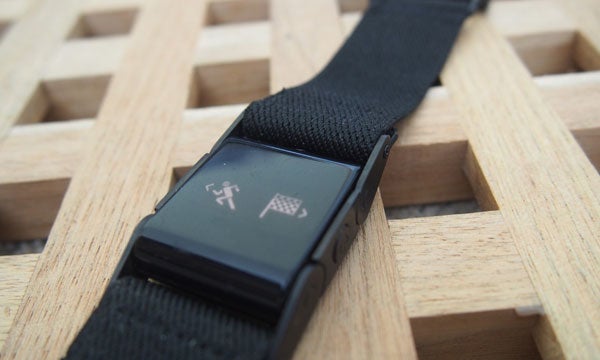
Verdict
Key Specifications
- Heart rate tracking; changeable straps; patented optical sensor; 10 hour sport mode; accelerometer; 96x39 OLED display; Bluetooth Smart 4.0; iOS and Android 4.0+ or above; IPX7 water-resistant
PulseOn: The heart rate wristband from former Nokia engineer
The PulseOn is a heart rate monitoring wristband created by a former Nokia engineer. It recently turned to crowd-funding website Indiegogo to raise some extra money and offer a reduced pre-order price. It looks set to fall well short of its $150,000 pledge total, but the offer to get it for $169 (around £100) instead of the full $199 (£118) will still be on offer through the PulseOn website.
It’s not the first device of its kind. The Scosche myTrek Wireless Pulse and MIO Alpha Link wristband already do the same job, albeit without a screen and a greater reliance on your smartphone. The Samsung Gear Fit and Withings Pulse O2 also include similar heart rate sensor technology, although in the case of the latter you have to take it off you wrist to get a reading.
PulseOn aims to deliver more accurate heart rate data and more importantly use that data to help you make improvements in the quest to stay fit.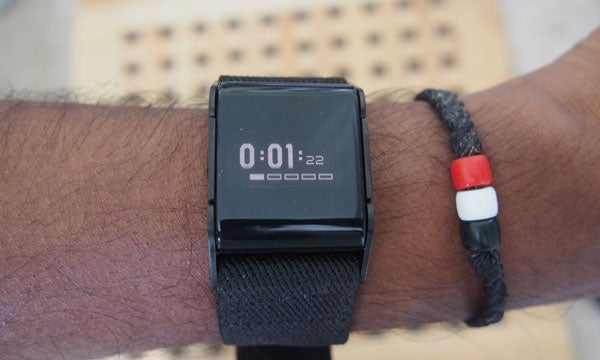
PulseOn: Design
The PulseOn still looks like a prototype. In its current state, you can’t really compare it to something as good-looking as the Gear Fit. There’s a small 96×39 resolution OLED display, which is the focal point, and a knitted fabric strap that’s just very plain and ordinary looking. You will be able to switch the straps out for different colours ones, but it’s not going to greatly improve matters aesthetically.
The plastic screen has stainless steel edges and an ABS plastic casing that’s not entirely shabby and feels light and durable to withstand the rigours of a workout. It’s also IPX7 certified water-resistant, so you can take it swimming. One of the niggling issues with the PulseOn is securing the strap in place. It’s an awkward mechanism that’s similar to loosening or tightening a strap on a rucksack. It’s very fidgety to get in place. It won’t budge from your wrist but it will take some time getting it to sit right in the first place.
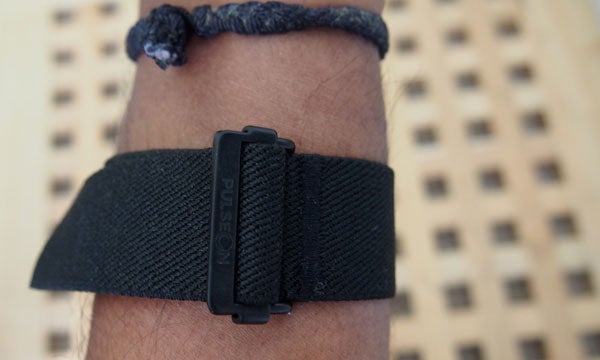
There are two buttons on either side of the screen, but it’s not clear what they do without referring to the instructions. One turns the PulseOn on after holding it down for five seconds, while the other initiates the tracking.
At the back is where you’ll find the heart rate sensor and charging pins for one of the most irritating proprietary charging devices we’ve come across on a wearable. Connected to a microUSB to USB charging cable, it clamps onto the back much like a clothes peg and is easy to knock out of place, leaving you with a powerless wristband.
But the design does have some points in its favour. The PulseOn is extremely unobtrusive to wear and at 29g, is one of the lightest trackers we’ve tried. It doesn’t get particularly sweaty despite opting for a fabric band and it doesn’t move about when you are running or in the gym. We just wish it was more pleasing on the eye.
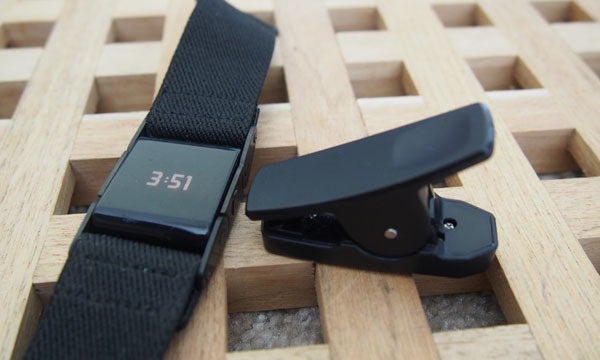
PulseOn: Features
The major talking point is the heart rate sensor around the back as it means you don’t have to wear a chest strap system. There’s no need to take it off to make a reading and like the TomTom Runner Cardio it uses an optical sensor setup. PulseOn works in much the same way, flashing a series of lights against the surface of your skin to detect the volume of blood flow and create the heart rate reading. The built-in accelerometer can also assist picking up more accurate readings when you are moving.
PulseOn’s makers say its patented technology has been validated against ECG testing, which is currently used in the medical profession for monitoring heart rate and should ensure accurate results. Disappointingly, there’s no GPS, which would have no doubt pushed up the price but it’s a feature we’d like to have seen included.
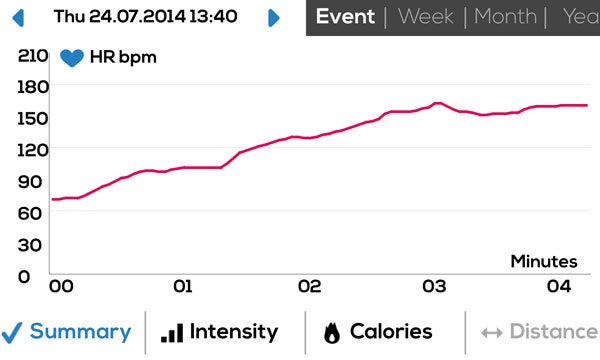
There’s an accompanying app that’s available for iOS and Android smartphones running on Android 4.0 or above. That means you have the necessary Bluetooth 4.0 connectivity support to sync data between the two devices in real-time. The PulseOn app will let you see all of your data stored and can track training intensity, recovery time, fitness level, calories burned, distance and speed. The PulseOn device itself can store two weeks of data of internal memory and means you don’t have to always go out running with your phone.
Battery life for the PulseOn is 10 hours when in sport mode, which basically means when you are utilizing the heart rate monitor. It can last for five days when you are just using it as a watch. In comparison, the TomTom Runner Cardio will run for 8 hours with both the GPS and heart rate monitor in use and ten hours for normal watch use. In our time with it, however, it lasted around a day before it needed charging again so this clearly needs to be addressed.
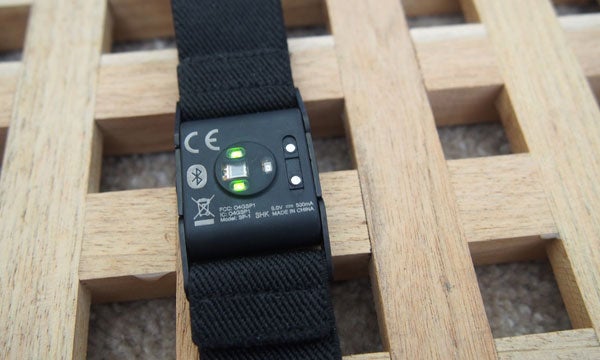
First Impressions
I took the PulseOn out on a few runs and couldn’t really fault the accuracy of the heart rate tracking when compared to the Polar H7 heart rate monitor chest strap linked to the TomTom Runner running watch. Unlike the Gear Fit and the Gear 2 Neo, it doesn’t struggle to display readings when you are running and it’s easy to quickly glance down and get an idea of how you are doing.
When you venture into the app, data is easily digestible and actually really useful. It compiles a summary of the session and includes basic data like calories and distance covered if you have been running outside with your phone’s GPS turned on. It also gives you details on the intensity and the effects of training plus whether you have left enough time between workouts for recovery.
There are still niggles, like not being able to delete accidentally recorded times, and you can’t yet view monthly or yearly data, but that will be added in a later update. It’s a good start and offers some refreshingly useful insights.
Based on what I’ve seen so far, there’s some work to do with the PulseOn. The hardware design is underwhelming and the charging setup is not really ideal. The heart rate tracking is accurate and using that data within the app shows promise. If the hardware is given the necessary makeover it needs before launch, it still has potential for runners or cyclists who want something that’s compact and really makes the most of your heart rate data.
MORE: Best Fitness Trackers 2014


